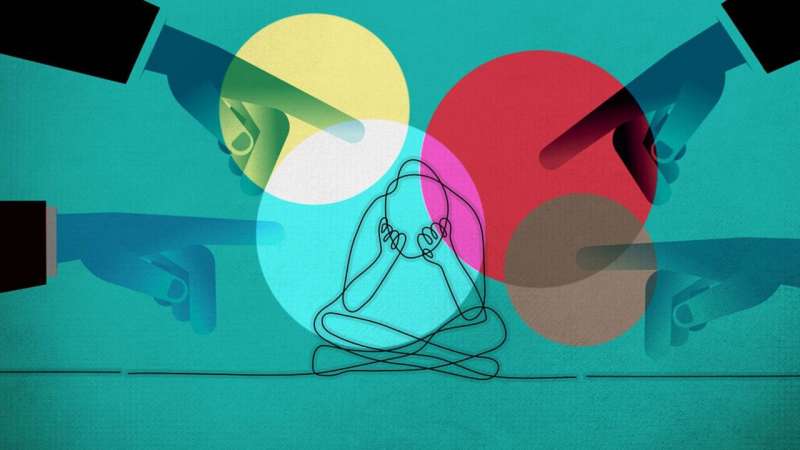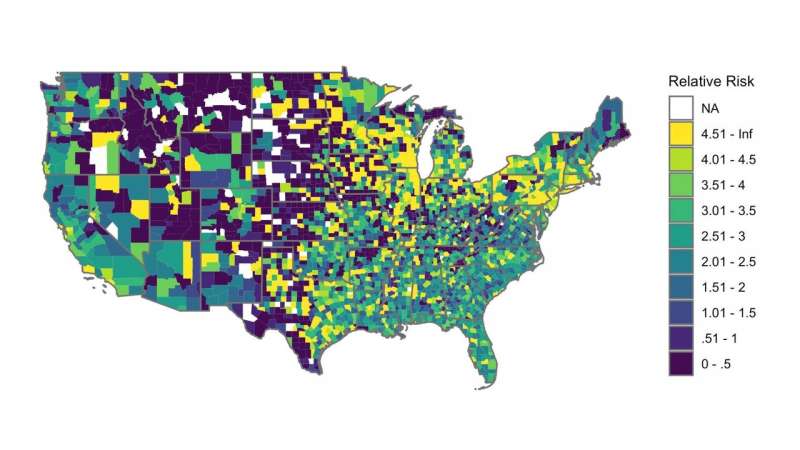Racial bias associated with disparities in disciplinary action across U.S. schools

Studies have shown that black students are subjected to higher disciplinary rates than whites, resulting in a number of negative life outcomes, including involvement in the criminal justice system.
Using federal data covering 32 million students across 96,000 K-12 schools, researchers at Princeton University investigated the degree to which racial disparities in disciplinary action across the United States relates to county-level measures of racial bias.
After pairing two different sets of data—one on racial bias and another on disciplinary reports in schools—the researchers show that black students experienced higher rates of suspension, expulsion, in-school arrests and law enforcement referrals than white students. This gap was larger in counties with more racial bias.
Their results were published April 2 in the Proceedings of the National Academy of Sciences.
"Our research joins a wealth of other findings suggesting that racial bias is contributing to disciplinary disparities," said Stacey Sinclair, a co-lead author of the study and professor of psychology and public affairs at Princeton's Woodrow Wilson School of Public and International Affairs. "In terms of a policy fix, it's hard to say what that would be. Our particular research identifies a relationship between racial bias and disciplinary disparities, but does not specify the reasons for this relationship."
Sinclair worked with Travis Riddle, a postdoctoral researcher in Princeton's Department of Psychology, on the study. The pair combined data from the Department of Education and Project Implicit, a nonprofit organization that collects data about people's biases.
The Department of Education conducts a survey every other year, collecting data on the rates of disciplinary actions broken down by race. Project Implicit collects information about racial bias from people using the internet, including the county where the survey respondent lives.
Using a statistical model, the researchers estimated the racial bias recorded by 1.6 million respondents who visited the Project Implicit website on a county-level basis, matching those responses with the Department of Education data. The researchers used data from 2015 to 2016, analyzing a little over 3,100 counties; there are currently around 3,200 counties in the United States.

The researchers investigated racial bias with regard to five common disciplinary actions: in-school school arrests, expulsions, law enforcement referrals, and in-school and out-of-school suspensions.
For each disciplinary action, black students were subjected to higher rates than whites. This was especially high with suspensions; 13.46 percent of black students received out-of-school suspensions compared to 3.5 percent of white students. This is nearly four times higher for blacks than whites.
"These disciplinary outcomes can be especially damaging to students. Studies have shown that in-school arrests, for example, have been associated with increased risk of engaging in anti-social behavior, and with dropping out of school," Riddle said.
The researchers expected to see larger disciplinary disparities in the South, and while disparities existed in the South, they seemed more strongly pronounced in the Northeast, based on the counties they were able to evaluate, which didn't include every U.S. county. Given the nature of the data, it is unclear why disparities might be concentrated in these areas.
To make sure these results were specific to racial biases, the researchers performed the same analysis using sexuality bias, which Project Implicit also collects. They found no meaningful correlation between higher rates of disciplinary action and sexuality bias.
The researchers highlight the correlational nature of the study, noting they are unable to identify a cause-and-effect relationship because of the data limitations.
"It's certainly possible that racial bias is a contributing factor to these disparities. It's also possible the disparities are contributing to racial bias. Either way, our work is one piece in a larger puzzle that's increasingly pointing toward racial bias as a factor," Riddle said.
The paper, "Racial disparities in school-based disciplinary actions are associated with county-level rates of racial bias," was published April 2 in PNAS.
More information: Travis Riddle et al. Racial disparities in school-based disciplinary actions are associated with county-level rates of racial bias, Proceedings of the National Academy of Sciences (2019). DOI: 10.1073/pnas.1808307116
Journal information: Proceedings of the National Academy of Sciences
Provided by Princeton University


















